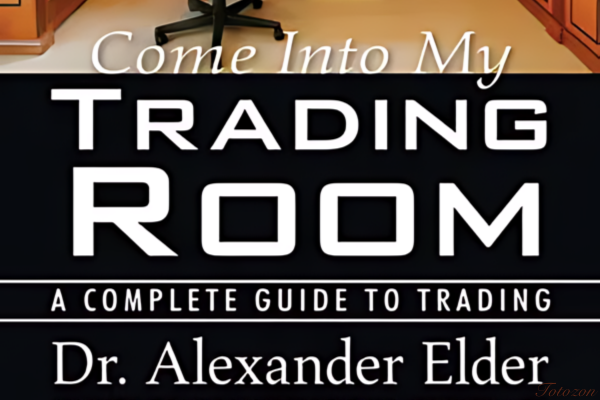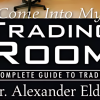Come Into My Trading Room: A Complete Guide to Trading with Alexander Elder
$39.00 Original price was: $39.00.$6.00Current price is: $6.00.
File Size: Cooming soon!
Delivery Time: 1–12 hours
Media Type: Online Course
Content Proof: Watch Here!
You may check content proof of “Come Into My Trading Room: A Complete Guide to Trading with Alexander Elder” below:

Come Into My Trading Room: A Complete Guide to Trading with Alexander Elder
Introduction
In the world of trading, having a structured approach and the right mindset is crucial for success. Alexander Elder’s book “Come Into My Trading Room” offers a comprehensive guide to mastering the art of trading. This article explores the key principles and strategies outlined by Elder, providing a roadmap for both novice and experienced traders.
Who is Alexander Elder?
Background and Expertise
Dr. Alexander Elder, a psychiatrist turned trader, leverages his understanding of psychology to provide deep insights into the emotional and mental aspects of trading. His expertise is widely recognized in the trading community.
Notable Works
Elder has authored several influential books, including “Trading for a Living” and “Sell & Sell Short.” “Come Into My Trading Room” stands out as a detailed guide for traders seeking to improve their skills and achieve consistent success.
The Foundation of Successful Trading
Three M’s: Mind, Method, and Money
Elder introduces the concept of the three M’s, which are essential for trading success:
- Mind: The psychological aspect, focusing on discipline and emotional control.
- Method: The trading system or strategy used.
- Money: Risk management and capital allocation.
The Importance of Discipline
Discipline is the cornerstone of Elder’s philosophy. A disciplined trader can adhere to their plan and avoid impulsive decisions driven by emotions.
Developing a Trading Plan
Creating a Comprehensive Plan
A well-crafted trading plan is vital. It should include:
- Goals: Clear, measurable objectives.
- Strategies: Specific methods and techniques for trading.
- Risk Management: Rules for managing risk and protecting capital.
Consistency and Review
Consistency in following the trading plan is essential. Regularly reviewing and adjusting the plan based on performance helps in continuous improvement.
Technical Analysis Techniques
Charts and Patterns
Understanding and interpreting charts is fundamental. Key patterns include:
- Head and Shoulders
- Double Tops and Bottoms
- Triangles and Flags
Indicators
Technical indicators provide additional insights. Important indicators are:
- Moving Averages
- Relative Strength Index (RSI)
- Moving Average Convergence Divergence (MACD)
Fundamental Analysis
Economic Indicators
Fundamental analysis involves evaluating economic indicators that affect market conditions, such as:
- Interest Rates
- Employment Data
- Gross Domestic Product (GDP)
Company Financials
For stock traders, analyzing company financials is crucial. Key elements include:
- Earnings Reports
- Balance Sheets
- Cash Flow Statements
Risk Management Strategies
Position Sizing
Determining the appropriate position size for each trade helps manage risk effectively. Elder emphasizes the importance of not overcommitting capital to a single trade.
Stop-Loss Orders
Setting stop-loss orders is a practical way to limit potential losses. This involves predefining an exit point for losing trades.
Diversification
Spreading investments across different assets can reduce risk. Diversification prevents significant losses from any single investment.
The Psychology of Trading
Emotional Control
Managing emotions like fear and greed is critical. Elder discusses various techniques to maintain emotional balance, such as mindfulness and self-reflection.
Self-Discipline
Self-discipline is about sticking to your trading plan and avoiding impulsive decisions. Developing routines and habits that support disciplined trading is essential.
Using a Trading Journal
Benefits of Keeping a Journal
A trading journal helps track performance and reflect on decisions. It is a tool for learning and improvement.
What to Record
- Trade Details: Entry and exit points, position size, and rationale.
- Emotional State: Feelings and emotions experienced during trades.
- Performance Metrics: Win rate, risk-reward ratio, and overall profitability.
Interactive Learning
Role-Playing Exercises
Elder uses role-playing exercises to simulate real trading scenarios. These exercises help traders practice strategies and refine their skills.
Group Discussions
Group discussions at Elder’s camps foster collaborative learning. Traders share experiences, discuss strategies, and provide feedback.
Case Studies and Practical Examples
Success Stories
Elder shares numerous success stories, illustrating how traders have applied his teachings to achieve significant gains.
Common Mistakes
Analyzing common mistakes helps traders avoid pitfalls. Elder’s insights into these mistakes are invaluable for continuous improvement.
Tools and Resources
Recommended Trading Platforms
Choosing the right trading platform is crucial. Consider factors such as user interface, analytical tools, and order execution speed.
Educational Resources
Continuous learning is vital. Elder recommends books, webinars, and online courses to stay updated and enhance trading skills.
Continuous Improvement
Lifelong Learning
Elder emphasizes the importance of lifelong learning. Markets evolve, and traders must adapt by continually updating their knowledge and skills.
Networking and Mentorship
Building a network of fellow traders and seeking mentorship can provide valuable support and insights. Engaging with a community helps traders stay motivated and informed.
Conclusion
Alexander Elder’s “Come Into My Trading Room” offers a comprehensive guide to successful trading. By focusing on the three M’s—Mind, Method, and Money—traders can develop the discipline, strategies, and risk management skills needed for long-term success. Elder’s teachings provide a robust framework for both novice and experienced traders to enhance their performance and achieve their trading goals.
FAQs
1. What are the three M’s in trading according to Alexander Elder?
The three M’s are Mind (psychological discipline), Method (trading strategy), and Money (risk management).
2. Why is a trading plan important?
A trading plan provides structure and helps maintain discipline, ensuring consistent and rational decision-making.
3. How can I manage emotions while trading?
Techniques like mindfulness, self-reflection, and maintaining a trading journal can help manage emotions and maintain mental clarity.
4. What should be included in a trading journal?
A trading journal should record trade details, emotional state, and performance metrics to help analyze and improve trading strategies.
5. How does continuous learning contribute to trading success?
Continuous learning helps traders adapt to evolving market conditions, refine strategies, and stay informed about new developments.
Be the first to review “Come Into My Trading Room: A Complete Guide to Trading with Alexander Elder” Cancel reply
You must be logged in to post a review.
Related products
Forex Trading
Forex Trading
The Complete Guide to Multiple Time Frame Analysis & Reading Price Action with Aiman Almansoori
Forex Trading
Forex Trading
Forex Trading
Forex Trading
Forex Trading
Forex Trading
Forex Trading
Forex Trading
Forex Trading
Forex Trading
Quantamentals – The Next Great Forefront Of Trading and Investing with Trading Markets

 Options Trading & Ultimate MasterClass With Tyrone Abela - FX Evolution
Options Trading & Ultimate MasterClass With Tyrone Abela - FX Evolution 





















Reviews
There are no reviews yet.